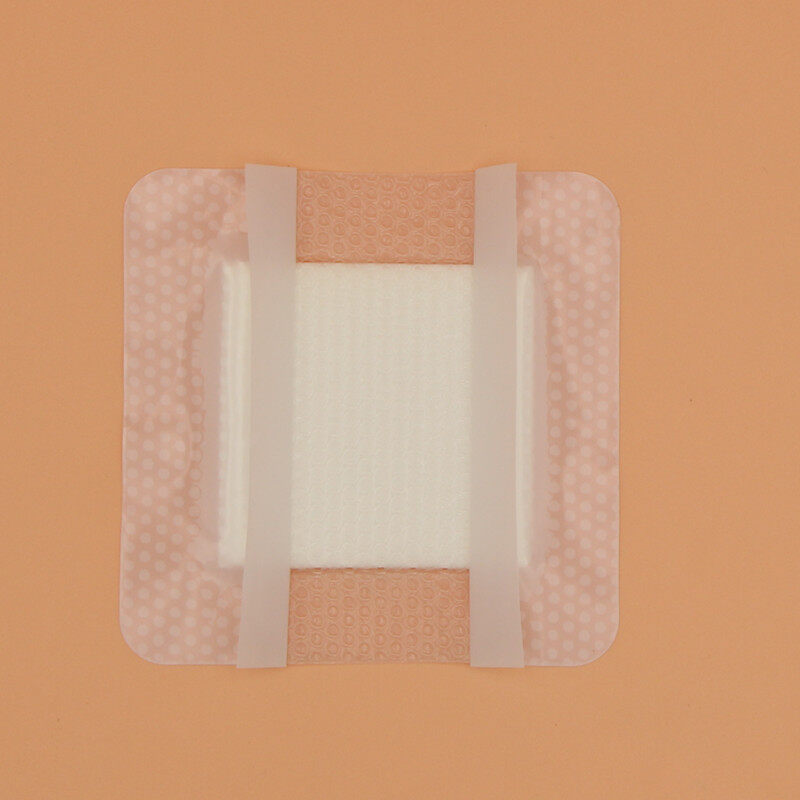Email cannot be empty
Password cannot be empty
Email format error
Email cannot be empty
Email already exists
6-20 characters(letters plus numbers only)
The password is inconsistent
Email format error
Email cannot be empty
Email does not exist
6-20 characters(letters plus numbers only)
The password is inconsistent


Silicone Foam Adhesive Dressing for Optimal Wound Care
In the journey towards recovery, the smallest details can make a world of difference. When it comes to wound care, the dressing plays a crucial role in promoting healing and providing comfort. Silicone Foam Adhesive Dressing is a modern innovation in medical care that offers a gentle, effective solution for a variety of wounds. This blog will explore the benefits, applications, and the science behind silicone foam adhesive dressing, shedding light on how this advanced material is transforming the way we treat wounds.
The Quest for Comfort in Wound Care
Wound care is a delicate balance of protection, healing, and comfort. Traditional dressings, while effective, can sometimes fall short in providing the optimal environment for recovery.
1. The Challenge with Conventional Dressings
Conventional wound dressings, while providing a protective barrier, can sometimes stick to the wound, causing pain and potential damage during removal. They may also not offer the best environment for healing.
2. The Need for a Gentler, More Effective Solution
Patients and healthcare providers have long sought a dressing that is not only effective in protecting and promoting healing but also gentle on the skin. This is where silicone foam adhesive dressing comes in, offering a new standard in wound care.
Understanding Silicone Foam Adhesive Dressing: The Science of Gentle Care

Silicone Foam Adhesive Dressing is a type of advanced wound care product that utilizes a unique silicone foam material to provide a gentle, effective, and comfortable solution for wound management.
1. Structure and Function
These dressings are made from an open-cell silicone foam that is highly absorbent and designed to conform to the shape of the wound. The structure of the foam allows for the absorption of exudate, creating a moist environment that is conducive to healing.
2. Gentle on Wounds
One of the key benefits of silicone foam adhesive dressing is its gentle nature. The foam is soft and pliable, reducing the risk of causing further trauma to the wound during dressing changes.
3. Breathability and Moisture Control
The foam structure also allows for breathability, which is essential for preventing the buildup of bacteria and promoting a healthy wound environment. It helps to maintain a balance of moisture, which is crucial for the healing process.
Applications of Silicone Foam Adhesive Dressing in Wound Care
The versatility of silicone foam adhesive dressing makes them suitable for a wide range of wound types and care settings.
1. Acute Wounds
For wounds resulting from accidents or surgeries, silicone foam adhesive dressing provides effective absorption and a gentle touch, reducing the risk of infection and promoting faster healing.
2. Chronic Wounds
Patients with chronic wounds, such as diabetic ulcers or pressure sores, can benefit from the consistent and gentle care provided by these dressings, which can help to prevent further complications.
3. Burns and Donor Sites
Silicone foam adhesive dressing is also used in the care of burns and donor sites, where they provide a protective barrier and help to manage exudate, reducing the risk of infection.
4. Post-Operative Care
After surgery, wounds need careful management to prevent complications. These dressings offer a gentle and effective solution for post-operative wound care.
Choosing the Right Silicone Foam Adhesive Dressing for Your Needs
When selecting a silicone foam adhesive dressing, it's important to consider several factors to ensure it meets your specific wound care needs.
1. Size and Shape
The dressing should be appropriately sized to cover the wound without being too large or too small. This ensures optimal protection and absorption.
2. Absorbency
Different wounds produce varying amounts of exudate. Choose a dressing with the right level of absorbency to manage the wound effectively.
3. Adhesive and Border Design
The adhesive should be gentle on the skin and secure enough to stay in place without causing damage or discomfort. The border design should also be considered for ease of application and comfort.
4. Skin Friendliness
Ensure the dressing is made from materials that are hypoallergenic and designed to minimize the risk of irritation or allergic reactions.
Conclusion
The advent of silicone foam adhesive dressing has marked a significant advancement in the field of wound care. By offering a gentle, effective, and comfortable solution, these dressings are helping to improve patient outcomes and experiences. As we continue to innovate in healthcare, the role of silicone foam adhesive dressing is likely to expand, offering even more benefits to those in need of wound care. Whether you're a healthcare provider seeking the best for your patients or an individual managing a wound, silicone foam adhesive dressing offers a promising approach to your healing journey.

